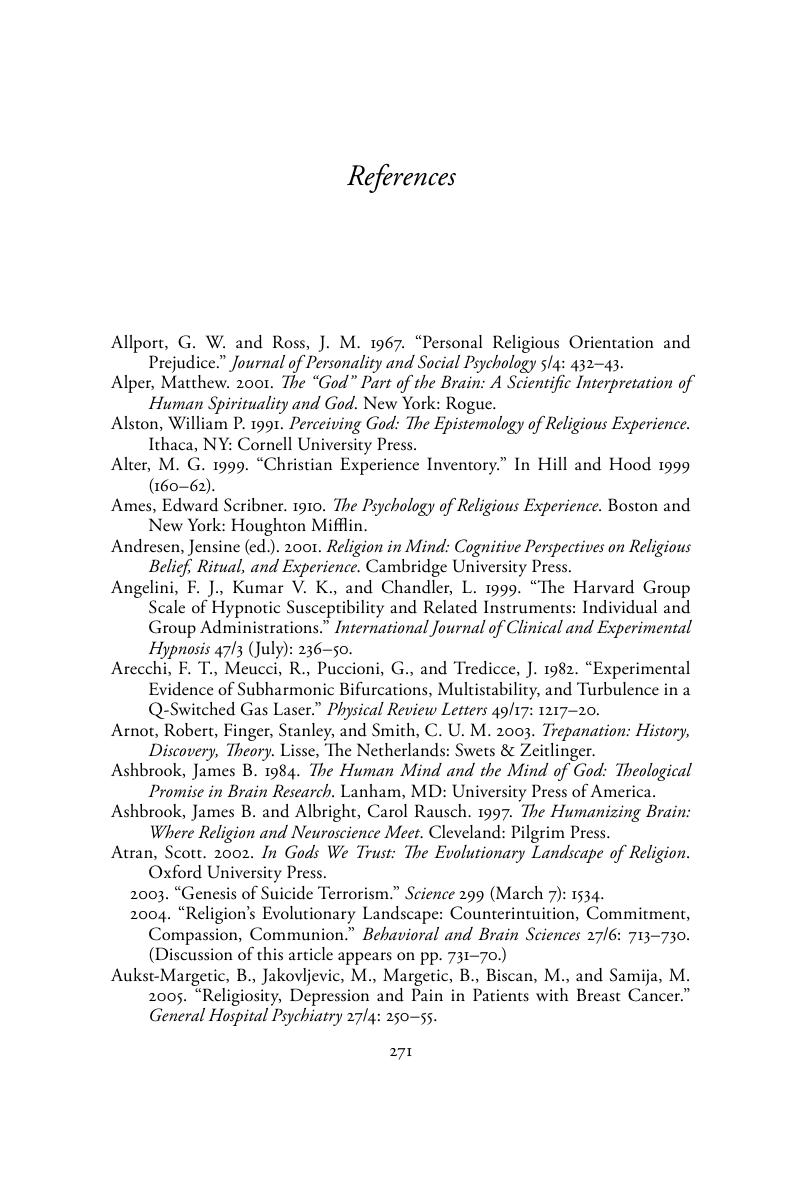Book contents
- Frontmatter
- Contents
- List of figures
- Preface
- Acknowledgements
- 1 Exploring a strange yet familiar landscape: a strategy for interpreting religious and spiritual experiences
- 2 Spirituality and the brain: a revolutionary scientific approach to religious and spiritual experiences
- 3 A smorgasbord of dangers and delights: the phenomenology of religious and spiritual experiences
- 4 Gateway to ultimacy: the importance of intense experiences
- 5 Can you trust your instincts? The cognitive reliability of religious and spiritual experiences
- 6 The brain-group nexus: the social power of religious and spiritual experiences
- 7 Make it start, make it stop! Religious and spiritual experiences in the future
- 8 Brains in bodies, persons in groups, and religion in nature: an integrative interpretation of religious and spiritual experiences
- Glossary of key terms
- References
- Index
- References
References
Published online by Cambridge University Press: 04 February 2011
- Frontmatter
- Contents
- List of figures
- Preface
- Acknowledgements
- 1 Exploring a strange yet familiar landscape: a strategy for interpreting religious and spiritual experiences
- 2 Spirituality and the brain: a revolutionary scientific approach to religious and spiritual experiences
- 3 A smorgasbord of dangers and delights: the phenomenology of religious and spiritual experiences
- 4 Gateway to ultimacy: the importance of intense experiences
- 5 Can you trust your instincts? The cognitive reliability of religious and spiritual experiences
- 6 The brain-group nexus: the social power of religious and spiritual experiences
- 7 Make it start, make it stop! Religious and spiritual experiences in the future
- 8 Brains in bodies, persons in groups, and religion in nature: an integrative interpretation of religious and spiritual experiences
- Glossary of key terms
- References
- Index
- References
Summary

- Type
- Chapter
- Information
- Religious and Spiritual Experiences , pp. 271 - 299Publisher: Cambridge University PressPrint publication year: 2011



